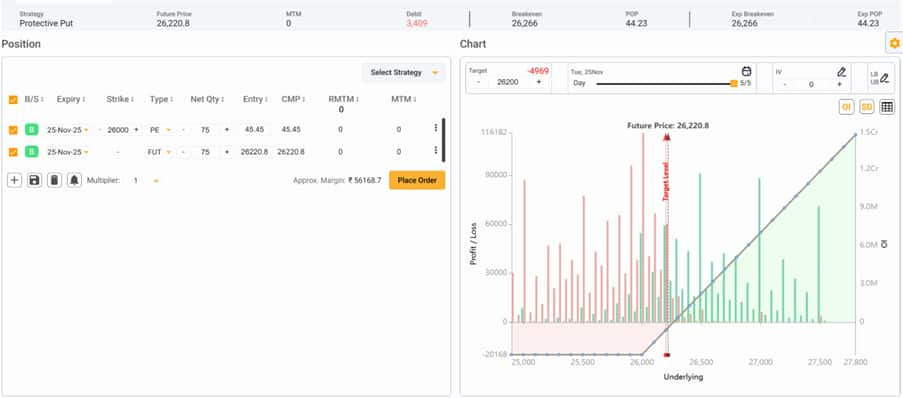Alter your trades time-frame to market conditions, says Shubham Agarwal
Modifications in the holding period can yield an edge in trades and hence, as market conditions change, so should your holding period for buy options.
SHUBHAM AGARWAL | 13-Mar-21
Reading Time: 3 minutes

Market
If you are an options trader, your success is dependent on multiple factors. Forecasts of trades may not be in absolute control but the mathematics of trade placement can certainly be controlled.
Trading style generally needs modifications in different market conditions like bullish vs. bearish trend, a different time in expiries, different implied volatility levels, etc. Today we’ll learn a few of them. We’ll assume the trade is simple buying options—buying calls or puts—and we’ll see how to optimise their placement.
Bullish versus bearish markets
It is pretty simple to say that one should buy Call options in a bullish market and Put options in a bearish market but what about the time frame? Most instruments tend to move up slower than they move down and hence, have a negative skew. So, trades in a bullish market can be longer in time but shorter in a bearish one.
For example, in an uptrend, a 5 percent move in stock might take three-four dayd but the same stock may correct 5 percent in a day in a bearish market. So, generally holding periods can be longer in a bullish market but should be shorter in a bearish market to optimize the trades. Implied volatility plays an essential role, too, which is explained below.
High implied volatility versus low implied volatility
Option greeks are internally related and so is implied volatility (IV) with theta. Be it calls or puts if you buy options, you pay theta and if you hold the options for too long the theta will start bleeding the position, reducing the chance of the trade being successful. Let’s understand the inter-relationship of IV and theta with an example.
Let’s assume these details of the option and compare it with two different IV scenarios.
Underlying Price: 1000Strike: 1000Days to Expiry: 5 Option type: CE
Case 1: IV at 20 percentWhen solved with the Black & Scholes formula, below will be the theta of the option. Theta: -0.93
Case 2: IV at 30 percentWhen IV is high, theta of the same option will be Theta: -1.40
These cases show that more the IV, more the theta decay and in absolute money, more will be option buyer loss due to decay in premium. Theta went up proportionately to the increase in IV ie 50 percent in the above example. So, as the buyer of an option, if you trade an instrument at an IV level of 20 percent and due to market conditions the IV of that same instrument increases to 30 percent (a 50 percent increase), to cope with the changed market scenario for an even PnL, you will need to reduce your holding time by 50 percent. So if you used to hold the trade for four days, now you’ll need to bring the holding time down to two days.
Trading a known event
A known event is the one that is known in advance but the outcome is not. Examples could be corporate results, monetary policies, fiscal policies, etc. Prior to known events, IVs of those instruments tend to rise significantly and due to the rise in IV, as explained above, the theta decay also rises. So, to optimize trades one should reduce the holding period when trading instruments where known events are shortly due.
Trading early in expiry versus later in expiry
Theta decays differently in different times—in the first half of the expiry, theta decays slowly and hence trades can be held longer but as the instrument approaches expiry, the theta decay starts to accelerate, hence the holding period needs to be shortened. For example, if you hold a buy option trade for five days in the early half of expiry, it should be shortened to 4, 3, 2, 1 to accommodate a similar theta decay as you approach expiry.
Summary
Modifications in the holding period can yield an edge in trades and hence, as market conditions change, so should your holding period of buy options strategies .
Learn and read more about bank nifty index from Quantsapp classroom which has been curated for understanding of nifty open interest from scratch, to enable option traders grasp the concepts practically and apply them in a data-driven trading approach
Recent Articles

Beyond Panic: Take control when your derivatives trade turns red, says Shubham Agarwal!
13-Dec-25

Evolve Your Trade: The missing step in most trading systems: Shubham Agarwal
06-Dec-25

Best trending option trading strategies: Shubham Agarwal
29-Nov-25

3 best ways to hedge using Options: Shubham Agarwal!
22-Nov-25

When in doubt to write, do Iron Fly: Shubham Agarwal!
15-Nov-25

Identify potential turning points with advance-decline: Shubham Agarwal
08-Nov-25

Slow and spreads more efficient: Shubham Agarwal
01-Nov-25

Use implied volatility as probable top finder: Shubham Agarwal
25-Oct-25

SHUBHAM AGARWAL is a CEO & Head of Research at Quantsapp Pvt. Ltd. He has been into many major kinds of market research and has been a programmer himself in Tens of programming languages. Earlier to the current position, Shubham has served for Motilal Oswal as Head of Quantitative, Technical & Derivatives Research and as a Technical Analyst at JM Financial.
Recent Articles

Beyond Panic: Take control when your derivatives trade turns red, says Shubham Agarwal!
13-Dec-25 09:12:00

Evolve Your Trade: The missing step in most trading systems: Shubham Agarwal
06-Dec-25 20:43:00

Best trending option trading strategies: Shubham Agarwal
29-Nov-25 09:32:00

3 best ways to hedge using Options: Shubham Agarwal!
22-Nov-25 09:11:00

When in doubt to write, do Iron Fly: Shubham Agarwal!
15-Nov-25 10:48:00

Identify potential turning points with advance-decline: Shubham Agarwal
08-Nov-25 10:35:00

Slow and spreads more efficient: Shubham Agarwal
01-Nov-25 10:35:00











